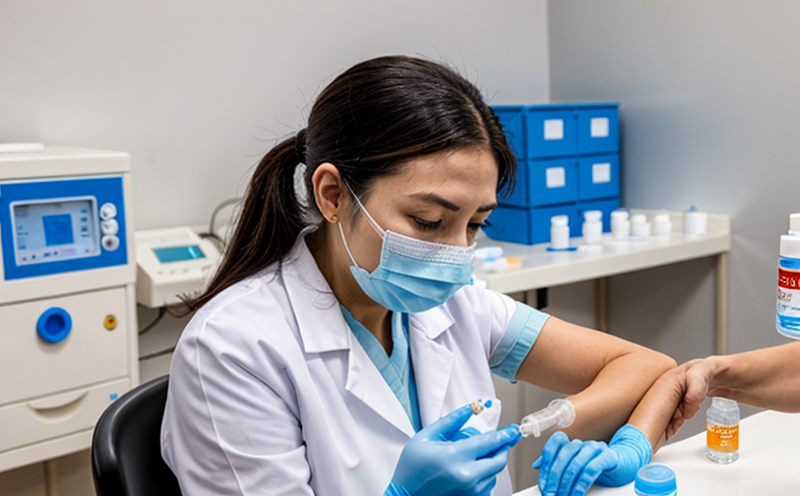Protein Concentration Determination by UV Absorbance Testing
In the pharmaceutical sector, particularly within vaccine testing and quality assurance, accurate protein concentration determination is critical. This process ensures that vaccines are safe, effective, and consistently meet regulatory standards. The method of choice for many laboratories is UV absorbance spectroscopy due to its simplicity, reliability, and cost-effectiveness.
UV absorbance spectrophotometry measures the amount of ultraviolet light absorbed by a solution at 280 nm, which is characteristic of aromatic amino acids such as tyrosine and tryptophan. This makes it an ideal method for estimating protein concentration in biological samples. The relationship between the absorbance (A) and the protein concentration (C), expressed in milligrams per deciliter (mg/dL), can be approximated by the following equation:

This empirical relationship, known as the Bradford or Lowry method, allows for quick and reliable protein quantification without the need for complex sample preparation.
The process begins with proper sample handling. The specimen must be diluted if necessary to fall within the linear range of the spectrophotometer. Typically, this range is between 0.1 and 2 mg/mL depending on the instrument used. Once prepared, a small aliquot of the solution is placed in a cuvette and inserted into the UV-Vis spectrometer.
The equipment used for this test includes a high-quality UV-Vis spectrophotometer capable of measuring absorbance at 280 nm with precision. The spectrophotometer should also have a wavelength range that includes 260, 280, and 340 nm to allow for additional checks like the presence of nucleic acids or other interfering substances.
The test procedure involves recording absorbance values at each wavelength point and then calculating the protein concentration using the appropriate calibration curve. The results are reported in mg/mL, which is a direct measure of the protein content in the sample. This method provides rapid feedback to quality managers and compliance officers ensuring that vaccines meet stringent standards for purity and efficacy.
Proper calibration and regular maintenance of the spectrophotometer are essential to ensure accurate measurements. Regular recalibration using a standard protein solution is recommended every 6 months or as per manufacturer guidelines. This ensures consistent results over time, which is crucial in maintaining high-quality pharmaceutical products.
In conclusion, UV absorbance testing is a cornerstone technique in vaccine development and quality assurance. Its simplicity and reliability make it an indispensable tool for pharmaceutical laboratories worldwide.
Industry Applications
The application of protein concentration determination by UV absorbance spectroscopy extends beyond just the pharmaceutical sector, finding relevance in various biotechnological processes:
- Biotherapeutic Development: Ensuring that therapeutic proteins are accurately quantified to maintain consistent efficacy.
- Vaccine Production: Monitoring protein concentration during manufacturing to ensure vaccine potency and safety.
- Antibody Research: Quantifying antibodies in research settings for further development of immunotherapies.
- Bioprocessing: Optimizing bioreactor conditions by tracking protein concentrations during fermentation processes.
The method is also widely used in academic and industrial research laboratories to support a wide range of projects from basic science to clinical trials. Its versatility makes it an essential tool for any facility involved in the production, testing, or evaluation of proteins.
Competitive Advantage and Market Impact
The ability to accurately determine protein concentration is crucial not only for ensuring product quality but also for maintaining a competitive edge in the pharmaceutical market. By using reliable UV absorbance spectroscopy, companies can:
- Ensure Regulatory Compliance: Adherence to international standards such as ISO and FDA guidelines.
- Improve Product Quality: Consistent protein concentrations lead to more effective and safer vaccines.
- Rapid Turnaround Times: Faster testing allows for quicker decision-making, reducing time to market.
- Cost Efficiency: Minimizing waste through precise sample preparation and accurate measurements.
In the competitive landscape of pharmaceuticals, maintaining a high level of quality is paramount. Accurate protein concentration determination not only enhances product efficacy but also builds trust with regulatory bodies and consumers alike. This translates into increased market share and customer loyalty.
Use Cases and Application Examples
In the context of vaccine testing, UV absorbance spectroscopy plays a crucial role in several stages:
- Safety Testing: Ensuring that vaccines do not contain excessive amounts of proteins which could lead to adverse reactions.
- Efficacy Evaluation: Checking protein content to ensure the vaccine is potent and effective as intended.
- Purity Assurance: Identifying any impurities or contaminants in the vaccine formulation.
For instance, during the development of a new vaccine, researchers might use UV absorbance spectroscopy to monitor changes in protein concentration throughout different stages of production. This helps in optimizing processes and ensuring that the final product meets all quality standards. In clinical trials, accurate protein quantification is vital for dose calculations and ensuring consistent results across batches.
Additionally, this method can be used post-market to monitor vaccine stability over time and under various storage conditions, ensuring long-term efficacy and safety.





